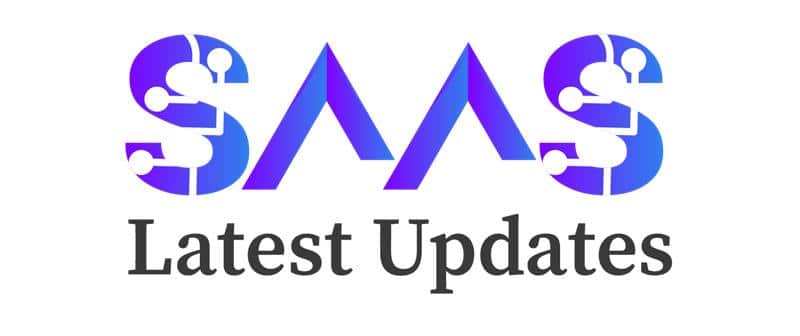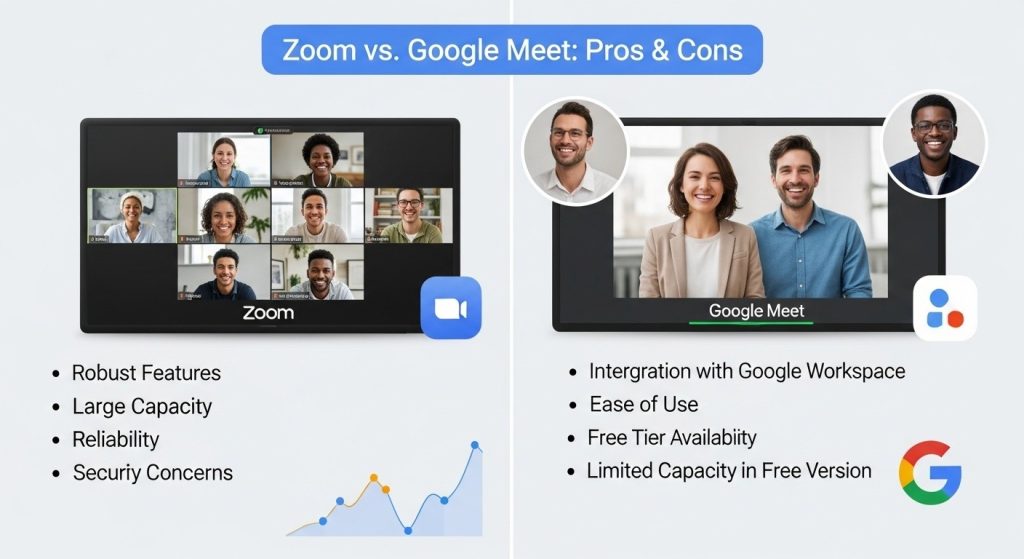20-Second Summary
A video conferencing platform is crucial today, especially when remote work and remote education are becoming more accessible and prioritized methods of connecting globally.
Zoom and Google Meet are among the popular tools being used widely by big businesses, educational institutions, and freelancers for their video conferencing needs.
This blog post is an in-depth guide with a detailed comparison of the features, pricing, pros, cons, and reviews to help you pick the ideal one for your business requirements.
Let’s start our Zoom vs Google Meet comparison!
Zoom Vs Google Meet: What Exactly Are They?
Both Zoom and Google Meet are popular video conferencing SaaS tools being used globally for professional purposes.
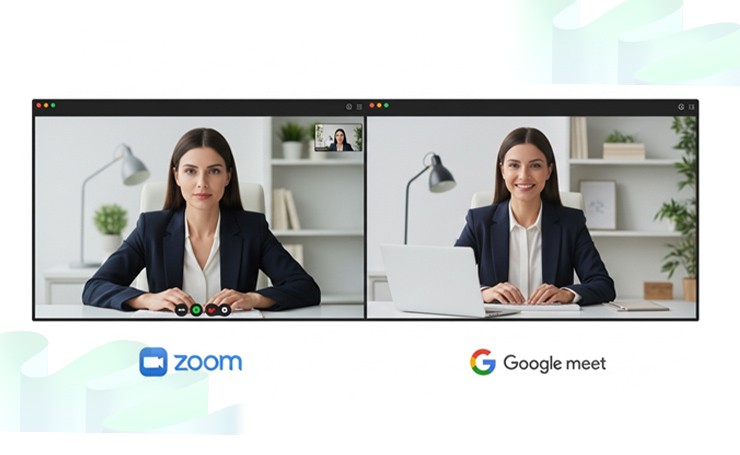
- Zoom now handles approximately 350 million daily meeting participants, commanding about 55% to 56% of the global video conferencing market.
- Google Meet reaches over 300 million monthly active users, but its share of the video conferencing market remains around 17%.
Both platforms provide almost similar features, but both have their drawbacks as well, which may or may not make them an ideal choice for you.
Let us explore their differences with a side-by-side comparison and see how they outperform each other in certain factors, and why one is better than the other for a certain business or person.
Features Comparison: Zoom vs Google Meet
Features are the top priority, along with pricing, based on which any SaaS tool is selected by the businesses. Below is a breakdown of each key feature required by a video conferencing platform, and how Zoom and Google Meet meet their criteria for the respective ones.
Meeting Limits & Participant Capacity, Breakout Rooms
- For their Free plan, Zoom limits the participant capacity to 100, which is the same as Google Meet.
- Zoom offers just 40 minutes for a meeting in its free plan, whereas Google Meet offers 60 minutes. Users do get the option of creating another meeting with the same limit and share the link for their participants to rejoin, but this is not professional, and they may also lose the interest of many participants, making them not join again.

- With the paid plan of both tools, one can increase the limit of meeting minutes and the number of participants for both tools, which have been described in the pricing comparison section at the end of the features.
- Breakout rooms are also offered by both platforms, but with the Zoom free plan, they are only available for the meeting limit of 40 minutes, while Google Meet offers this feature as part of their paid plan only.
Video & Audio Quality
Below is a detailed breakdown on the video/audio quality features of both tools.
Default Video Resolution
Zoom: Zoom offers 720p video resolution on free/group meetings and 1080p with business and enterprise plans, but to get the resolution implemented across your meetings, you need to contact them and get it done from the backend.
Google Meet: They offer 720p default in their free plans and offer 1080p resolution in paid plans for limited contexts (e.g., 1:1 calls).
Audio Enhancements and Noise Cancellation
Zoom: Available in paid versions with advanced audio settings.
Google Meet: Noise cancellation is available in premium plans.
Adaptive Video/Bandwidth Management
Zoom: Yes, the SDK actively monitors and adjusts video and audio quality.
Google Meet: Optimizes video layout based on the changes using AI for smoother performance
Screen Sharing
- Both tools offer full-screen sharing ability to the conference monitor and also allow the sharing of specific browsing tabs or specific apps.
- The remote control access, where others can control the screen, is offered by Zoom when given control, but it is limited, or there is no native remote control in many versions.
Collaboration Tools
Below, you will find a detailed breakdown of the collaboration tools available in both SaaS video conferencing platforms.
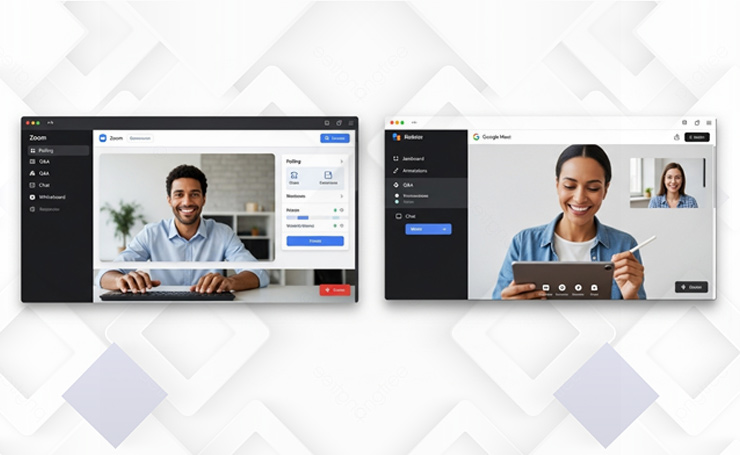
Polling and Q&A
Zoom: Yes, available in paid plans.
Google Meet: Yes, available in paid and Workspace tiers.
Hand Raising & Reactions
Zoom: Yes
Google Meet: Yes
In-Meeting Annotation / Whiteboarding
Zoom: Yes (annotation, whiteboard)
Google Meet: Supports Jamboard, while the annotation features are available in some plans.
Chat During Meeting
Zoom: Yes
Google Meet: Yes
Recording & Cloud Recording
- Zoom allows you to record 40-minute free meeting plans, but you can save them on your device’s storage location only; Google Meet does not give the option of recording meetings with the free plan.
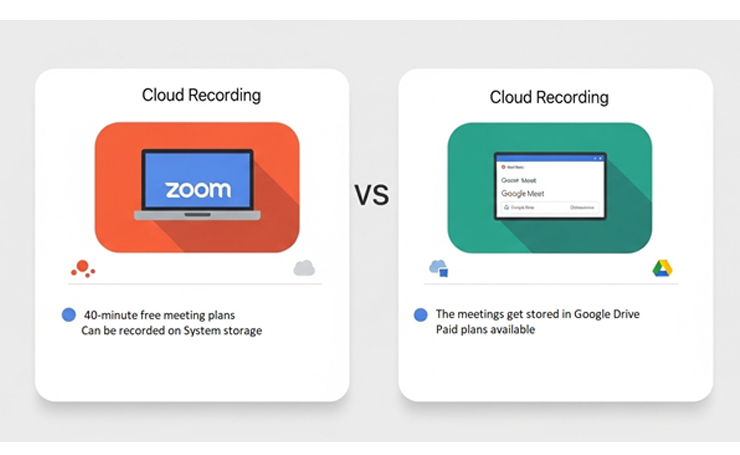
- Cloud recording is available for both tools in their paid plans.
- Meeting transcriptions are also available in the paid plans only.
- Zoom provides its own cloud storage space, whereas Google Meet meetings get stored in the Google Drive.
Live Captions
- Both platforms offer live captions for both free and paid plans.
- Both Google Meet and Zoom also offer live translated captions in multiple languages, helping attendees of conferences to select their preferred language for the captions.
- Google Meet has an automatic language detection feature and translates to the user’s language; on the other hand, Zoom allows users to enable required translations from the meeting controls.
Live Streaming
- Zoom natively supports live streaming directly to platforms like YouTube, Facebook, and Twitch, and also to custom RTMP services, but it requires having a Pro, Business, or Enterprise Zoom account.
- Google Meet also allows native live streaming to YouTube with a direct streaming option based on its integration. But you can also use other tools like OBS to capture your Google Meet window and stream it to other platforms.
- The maximum viewer count depends on your plan and add-ons, and also the platform you are streaming to. Public streams can reach millions of people, while you can also limit your streams to a specific range of people within the organization.
Chatting Features
- Both platforms provide the chatting feature during the meeting.
- The key difference between the platforms is that with Zoom, you can individually respond to a person from the participants rather than having to respond in the mutual chat with all participants, which is not possible with Google Meet.
Whiteboards
- Zoom has a native whiteboard feature available in meetings, where participants can draw, add sticky notes, text, shapes, and collaborate in real time. Multiple people can contribute, making it useful for brainstorming sessions, workshops, and teaching.

- Google Meet also provides whiteboards either through Google Jamboard integration or through Google Workspace’s new digital whiteboard tools. The whiteboard features are not as rich as Zoom whiteboards, and while using the Jamboard integration, one might need to open Jamboard in a separate tab.
- Both tools allow saving the whiteboards to their cloud spaces so they can be used or shared for further collaboration.
AI Assistants
- Zoom offers an AI companion providing meeting summaries, meeting highlights, and action points, whereas Google Meet uses the Google Workspace AI ecosystem to explore and add real-time translation, transcription, and summaries.
- Zoom is ahead of Google Meet when it comes to AI integration and automation with its dedicated AI meeting tools.
- In Zoom, AI can auto-generate tasks, analytics, and follow-up notes from meetings. But Google Meet relies on Gemini + Workspace integration (e.g., summaries in Docs, tasks in Calendar).
Integrations
- Zoom offers over 1000 third-party integrations with platforms like Zapier and Salesforce.
- Google Meet offers over 200 apps in the marketplace, with deep integration with the Google Workspace.
Ease of Use & User Interface
- When it comes to setting up meetings with both platforms, Zoom requires a Zoom client or web app, whereas if you have a Gmail account, then you can join meetings seamlessly via the browser without registering again for Meet separately.
- The learning curve for Google Meet is simple and has a cleaner UI, providing ease, but Zoom, on the other hand, has a rich user interface with various controls that could overwhelm some beginners.
Virtual Background, Filters, UI & Ease of Use
- In the Zoom vs Google Meet comparison, Zoom usually outperforms due to its robust virtual backgrounds blur feature, along with a wide range of filters, whereas Google Meet offers backgrounds and visual effects through its “Appearance” settings, covering essentials like blur and replacement.
- Looking at Zoom vs Google Meet effects, Zoom provides advanced options such as touch-up appearance and studio effects for a polished look, but Google Meet only focuses on practical tools like automatic framing and lighting adjustments while keeping its interface simple and streamlined.
Scheduling (Desktop, Mobile, Cross-Platform)
- Desktop (Windows, Mac) app scheduling: Available for both platforms.
- Mobile (iOS, Android) scheduling: Both offer mobile scheduling for the iOS and Android platforms.
- Cross-platform compatibility: Zoom offers strong cross-platform compatibility for Windows, Mac, Linux, Mobile, and web, whereas Google Meet provides strong compatibility with web, mobile, and desktop.
- Calendar scheduling: Zoom can integrate with Google and Outlook calendars, while Meet offers a native integration with Google Calendar.
Security & Encryption
- Encryption in Transit: In the Zoom vs. Google Meet security comparison, both platforms offer encryption in transit, with Google Meet emphasizing end-to-end encryption options.
- Encryption at Rest: Zoom and Google Meet both support encryption at rest, but availability is tied to paid or enterprise plans.

- Host Controls & Meeting Moderation: Zoom offers more granular host features like waiting rooms, meeting locks, and co-hosts, while Google Meet provides strong moderation and meeting controls within Workspace.
- Security dashboards and Admin Controls: Zoom’s enterprise plans include detailed security dashboards, whereas Google Meet integrates admin tools and a full security center through Google Workspace.
Use Cases & Target Audience
Let’s have a look at the use cases for the target audience of both platforms.
Business Meetings
- Zoom works great for small to large businesses with its scalable plans and advanced features.
- Google Meet is very good too, especially if your team already uses Google Workspace.
Education
- Zoom is strong for virtual classrooms with breakout rooms and attention tracking.
- Google Meet offers solid education features through Workspace for Education.
Hybrid and Remote Teams
- Zoom supports hybrid setups with Zoom Rooms and strong hardware compatibility.
- Google Meet is improving with dynamic layouts and growing interoperability, even with Zoom Rooms.
Webinars and Large Events
- Zoom outperforms with its dedicated Webinar product, built for professional events.
- Google Meet Enterprise supports large meetings and live streaming for large groups and audiences.
Pricing Comparison
Now that we have a detailed look at the key comparison of features for both tools, let us have a look at their pricing breakdown, along with the allotted participants, meeting hours, live stream, and recording options availability.
| Platform / Plan | Price per user per month | Meeting hours per meeting | Max participants | Live stream available | Meeting recording available |
| Zoom Basic (Free) | $0 | 40 minutes (group meetings) | 100 | No | Local recording only |
| Zoom Pro | $13.33 | 30 hours | 100 (more with add-ons) | Yes (paid plans, webinar add-on) | Yes |
| Zoom Business | $18.33 | 30 hours | 300 | Yes, using the webinar add-on | with more cloud storage |
| Zoom Enterprise | Custom pricing | 30 hours | Up to 1000+ with add-ons | Yes, supports webinars and live events | Yes, unlimited cloud storage |
| Google Meet Free | $0 | 60 minutes (group meetings) | 100 | No | No |
| Google Workspace Business Starter | $7 | 24 hours | 100 | No | No |
| Google Workspace Business Standard | $14 | 24 hours | 150 | No | Yes, saved to Google Drive |
| Google Workspace Business Plus | $22 | 24 hours | 500 | No | Yes, saved to Google Drive |
| Google Workspace Enterprise | Custom pricing | 24 hours | Up to 1000 (500 active + view-only beyond) | Yes, in-domain live streaming up to 100,000 viewers | Yes, with advanced admin controls |
Zoom vs Google Meet: Pros & Cons
The pros and cons of both tools have been given below.
Zoom Pros
- Zoom offers rich meeting features like breakout rooms, waiting rooms, live polls, and thousands of app integrations.
- It provides strong tools for recording, transcription, whiteboarding, and screen sharing.
- Zoom scales well for large organizations, training sessions, and professional webinars.
Zoom Cons
- The free plan limits group meetings to 40 minutes, which can disrupt longer sessions.
- Zoom did face some security and privacy concerns in the past, like Zoombombing.
- It can run into technical glitches and depends heavily on strong bandwidth.
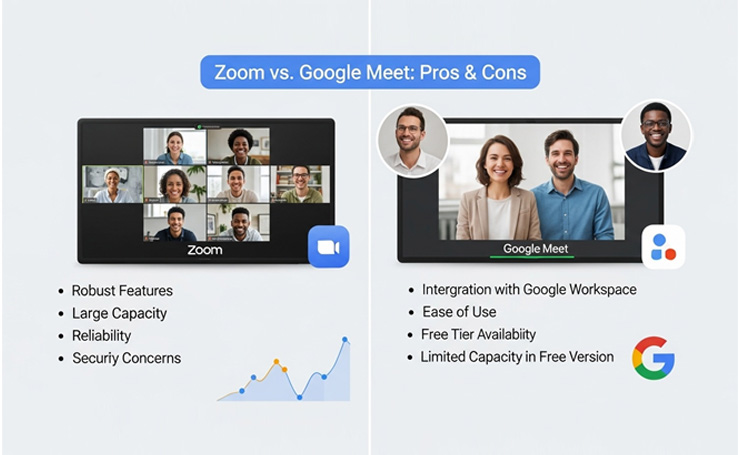
Google Meet Pros
- Google Meet integrates seamlessly with Google Workspace, including Calendar and Drive.
- It is very user-friendly, often running directly in the browser without the need for installation.
- Enterprise plans support large meetings, scaling up to 1,000 participants with ease.
Google Meet Cons
- It offers fewer advanced host controls and customization compared to Zoom.
- Features like recording, breakout rooms, and advanced options are locked behind paid plans.
- Performance can dip in browsers, and some features, like screen sharing or layouts, remain limited.
Zoom vs Google Meet Reviews
Based on the user reviews, Zoom is excellent for hosting for both small teams and for enterprise webinars, has strong recording, integrations, and breakout rooms.
While for Google Meet, reviewers say that it is easy to launch using Gmail, without having to install software or register again for it, it provides ease of use for teams already in Google Workspace, but it lacks advanced webinar controls and detailed host features, which are readily available with Zoom.
| Platform | G2 Rating | Capterra Rating | Software Advice Rating | Key Takeaways |
| Zoom | 4.6 / 5 | 4.6 / 5 | 4.6 / 5 | Users love Zoom’s scalability, breakout rooms, and webinar tools. Some bandwidth issues were reported with concerns over higher pricing for advanced features. |
| Google Meet | 4.4 / 5 | 4.5 / 5 | 4.5 / 5 | Google Meet got liked for its simplicity, browser-based access, and seamless integration with Workspace. But it was reported to have fewer advanced features than Zoom. |
How to Choose The One For Your Business Needs?
Let us see how you can pick one from both tools based on your business requirements.

For Advanced Features and Scalability
- If you need advanced features and scalability, then going with Zoom will be ideal for your business as it offers breakout rooms, webinars, cloud recording, and interactive tools.
- Zoom works especially well for large teams, client-facing events, and organizations that host frequent virtual workshops or training sessions.
If you are already a User of Google Workspace
- If your team already uses Google Workspace, choose Google Meet.
- It integrates directly with Gmail, Calendar, and Drive, which makes scheduling and collaboration effortless.
- Meet is also easier for smaller teams that value simplicity and quick browser-based access without extra software.
For Hybrid and Remote Setups
Choose Zoom because it is leading with Zoom Rooms and stronger hardware compatibility, but Google Meet is improving rapidly with AI-driven layouts and better interoperability.
For Cost-Effectiveness
- Choose Google Meet because it offers excellent value, especially for small businesses already paying for Workspace.
- Zoom’s free tier works for very small teams, but serious business use often requires a paid plan.
Final Remarks
When it comes to Zoom vs Google Meet, Zoom is considered the powerhouse for feature-rich, scalable video conferencing; on the other hand, Google Meet is the smart choice for teams living in Google Workspace who want simplicity and integration.
Based on your organizational needs and budget requirements, either of the tools can be great for you based on their features, integrations, and automation features, and both are consistent in working on improving their AI features further, showing they are working to enhance their performance and provide extra value for money.
For more AI SaaS Tools-related updates and information, keep visiting Latest SaaS Updates, as we keep updating SaaS information regularly
Frequently Asked Questions
Is Zoom better than Google Meet for large meetings?
Zoom is better because it offers higher participant capacities and more advanced features like polls, webinars, and breakout rooms that are not available in Google Meet.
Which is more secure: Zoom or Google Meet?
Both platforms are secure, offering encryption, MFA, and compliance.
Does Zoom have better recording features than Google Meet?
Zoom supports both local and cloud recording with transcripts and advanced options. Google Meet also allows recording to Google Drive in paid plans, but recordings end automatically after 8 hours.
Can Google Meet replace Zoom for webinars?
Google Meet works well for internal events and enterprise live streaming, but Zoom’s dedicated Webinar product is more advanced for larger audiences with interactive features and strong third-party integrations. Both are good in their own way and depend on the user’s platform preferences.
Why do companies use Zoom instead of Google Meet?
Companies prefer using Zoom because of its scalability, custom branding, and strong integrations with over 1000 platforms, as well as advanced webinar controls. Those who do not want to stick to the Google Workspace ecosystem and require advanced controls for a larger audience reach via webinars find Zoom a great option over Google Meet.
Is Zoom or Google Meet more accessible?
Google Meet provides easy access to those who are already using Gmail, with quick access using a web browser; Zoom, on the other hand, requires the installation of a desktop or mobile app for accessing the full features.
Is Zoom better than Google Meet for screen sharing?
Yes, Zoom is better than Google Meet for screen sharing because it offers advanced screen sharing, offering annotations, remote control, and multiple shared screens.
Does Zoom have a time limit for meetings?
Zoom offers a 40-minute time limit on its free plan, but this does not restrict you from having the option to start another free 40-minute meeting. It has a drawback of the audience losing interest in joining different links after each session, while paid plans extend meetings up to 30 hours.
How many minutes is Google Meet free?
Google Meet provides users with 60 minutes of free video conferencing, where the meeting ends automatically after an hour, and if one wants to stay on the free plan only, they can restart another 60-minute conference, but with a different link for the new meeting that others will have to click to rejoin, which is generally not a professionally acceptable practice.
